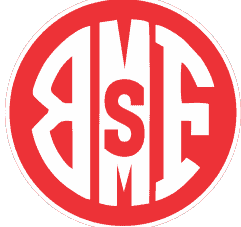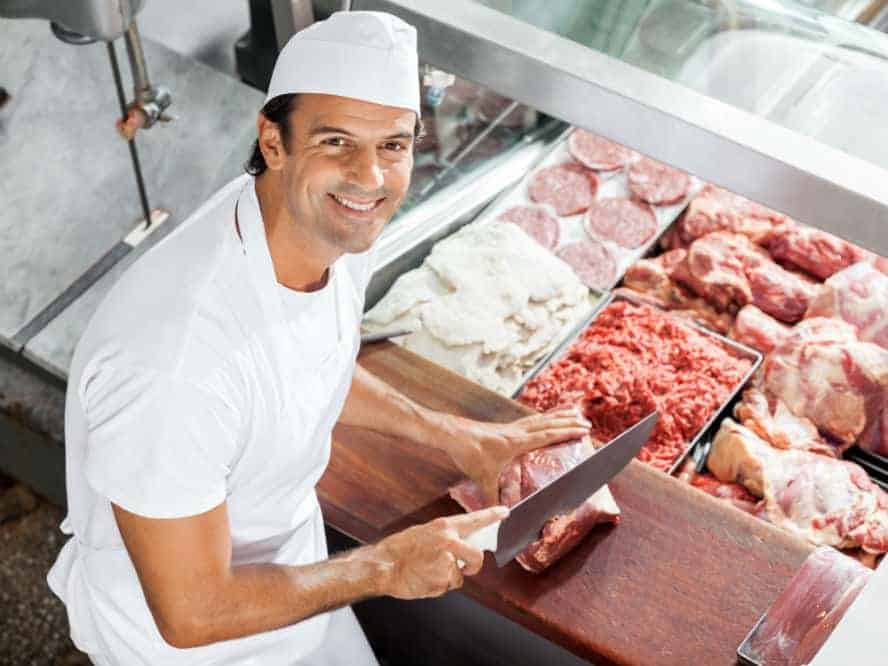This post contains affiliate links. As an Amazon Associate I earn from qualifying purchases
Whether you’re curious about how your favorite steak cut comes in the form it’s in, or you’re seriously considering channeling your inner Salt Bae Nusret Gokce, this article on how to cut meat like a butcher has got you covered! We’ll show you how a half steer becomes the filet mignon, New York strip steak, or Tri-tip roast cut that you love.
Table of Contents
How to Cut Meat Like a Butcher?
For this article, we’ve chosen to illustrate with a half steer. Basically, it’s divided into four parts: the round, loin, ribs, and chuck.
The Round
The round, also known as the rump, refers to the rear end of the cow. Here are the steps to break it down:
Step 1: Remove the oyster steak sitting atop the aitch bone.
Step 2: Take out the aitch bone, which is somewhat like a wishbone, by cutting the tendons that hold it in place.
Step 3: Take off the shank or leg portion. After which, you can easily access and unbundle the four muscles on the round—top round, knuckle or sirloin tip, eye round, and bottom round.
Step 4: Get to the top round first. Then, remove the femur bone or the upper leg bone to access the other muscles.
Step 5: Separate the knuckle or sirloin tip, the heel found behind the knee, and the bottom round.
Step 6: Proceed with cleaning the top round and the eye round by shaving off the fascia or connective tissues that bind the muscles together. These are the white sheets that cover each muscle group. For the sirloin tip, remove the knee cap then get to the sirloin tip side and the sirloin tip center. For the bottom round, remove some fats covering it.
So here’s what you get from the round: oyster steak, shank, top round, femur bone, knuckle, eye round, and bottom round.
Step 7: Cut up the sirloin tip and the top round into sirloin tip and London broil steak cuts respectively. Remember to cut across the grain.
The eye round and the bottom round are great for roast beef, so you can tie them up instead of cutting them up. Tying fetches you a uniform thickness that’s great for even cooking.
The Loin
The loin is the part between the lower ribs and the pelvis. This is how you cut it up:
Step 1: Remove the flank or the abdominal muscles by separating the membrane.
Step 2: Cut away the loose membrane and some of the fat to get to the sirloin flap or bavette.
Step 3: Take away the suet or the hard fat that surrounds the animal’s kidneys. They are often used for making cosmetics or candles, but you can use them as frying fat.
Step 4: Pull out next the tenderloin, which is shaped like a tail with the pointed end found a little past the ribs and the thicker end near the round or butt. Because this muscle does little work, it is the tenderest part of the beef. Then, pull off the psoas minor from the tenderloin. You’ll be left with the strip sirloin.
Step 5: Dislocate the loin from the sirloin.
Step 6: Debone the sirloin. Note that the bone is somewhat concave, so you have to feel your way through the cutting.
Step 7: From the sirloin, remove the tri-tip and ball tip, which is a bit of the sirloin tip left behind. That leaves you with the top sirloin.
The breakdown will yield you the following: flank, sirloin flap, top sirloin, tenderloin, tri-tip, and strip loin.
Step 8: Continue with the cleaning and cutting process. Clean the tenderloin, the sirloin flap, and the tri-tip by removing the membrane. Tie up the tenderloin for roasting or cut it up for filet mignon cuts. For the top sirloin part, clean and slice for New York strip steaks. The top sirloin can be used for top sirloin steaks.
The Rib
Now, let’s go to the least complicated part—that’s if you have a handsaw:
Step 1: With the inner part of the ribs facing you, pull off the membranes. This should reveal the diaphragm muscle or inside skirt and the abdominis muscle or outside skirt. Peel the skirts off with your knife then roll and set aside.
Step 2: Take off the navel next, which is the cartilage that holds the ribs together at the lower part of the chest. This should be at the opposite end of the spine.
Step 3: Using a handsaw, cut the rib part into two. One portion is connected to the spine or what we call the short rib plate. The other one is the rib or front chest.
This part will yield you the rib, the short rib plate, the inside and outside skirts, and the navel.
Step 4: Proceed to clean and cut them into roast or steak cuts.
For the navel, remove some of the cartilage. For the inside and outside skirts, peel off the membrane and some fats then roll each back up. For the rib, take off the spine with a saw, peel the lifter meat with your knife, and then cut the ribs individually, which will yield you ribeye steaks. For the short rib plate, run it through the bandsaw to fetch you English cut short ribs or flanken-style short ribs. If you don’t have a bandsaw, then you can just divide them into full ribs.
The Chuck
The last part we’ll break down is the chuck, which is the shoulder part of the cow. Here’s how you do it:
Step 1: Saw off the bony part, which is the chuck and neck, in one piece. Set aside.
Step 2: Take off the chuck rib plate from the remaining piece, and saw off the breastbone from the rib.
Step 3: Access the brisket muscles found on the breast or lower chest. Remove the fats by the neck to see the seams of the brisket clearly.
That leaves you with an entire arm.
Step 4: Remove the shoulder blade next to the foreshank. Then set aside the latter.
Step 5: Access and slice off the teres major, which is a small muscle from the blade of the shoulder, the underblade found at the underside of the shoulder blade, the clod heart, and the flat iron and the mock tender that sit next to the scapula.
So, the chuck part will yield you the following: chuck and neck bone, mock tender, flat iron, shoulder clod, underblade, teres major, chuck rib plate, foreshank, and brisket.
Step 6: Clean the teres major, the underblade, the shoulder clod, the flat iron, and the brisket. Again, by clean we mean remove the membrane to reveal a better texture.
Step 7: Cut the shoulder clod for ranch steak or roasting.
Step 8: Debone the chuck. Then, make cuts for neck roast, chuck ribeyes, and chuck eye and Denver steaks.
Step 9: Run the chuck rib plate through the machine for osso buco cuts.
Video Showing How To Butcher A Steer
There are many charts on the Internet that you can download for this purpose and videos to walk you through. This article, for example, is based on a demo by Jason Yang for Handcrafted.
Summary
Basically, that’s how to cut meat like a butcher. While this guide is focused on beef, the general principles apply to all kinds of animal meat. As you may have noticed, the big parts of the meat—in this case, the round, rib, loin, and chuck—are further broken down mostly by muscle groups. And the membrane or plastic-like sheet encasing and connecting the muscle groups are removed when cleaning.
Applied to other kinds of meat, you just need to familiarize yourself with the different parts of the animal as well as the various muscle groups you’ll find.


